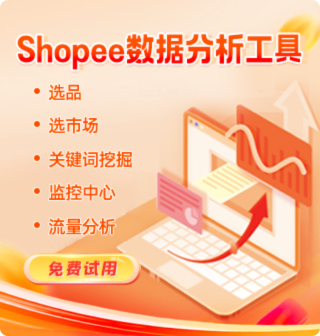-
用户127****5201
Understanding Shopee ERP: Streamlining E-Commerce Operations for Sellers
As Shopee’s marketplace continues to grow rapidly across Southeast Asia and other regions, sellers face increasing challenges in managing inventory, orders, and customer data efficiently. To stay competitive and scale effectively, integrating an Enterprise Resource Planning (ERP) system tailored for Shopee sellers has become a crucial strategy. This article explores what a Shopee ERP is, how it works, its benefits, and practical tips for sellers looking to adopt ERP solutions.
1. What is Shopee ERP?
An ERP (Enterprise Resource Planning) system is a software platform that automates and centralizes core business processes, including inventory management, order processing, accounting, and customer relationship management.
A Shopee ERP specifically integrates with Shopee’s platform to synchronize all the operational data directly from the marketplace, helping sellers streamline their daily activities. It acts as a centralized hub where sellers can manage multiple Shopee stores, channels, and warehouses in real-time.
2. Why Do Shopee Sellers Need an ERP?
Shopee sellers, especially those who operate at scale or across multiple markets, face several operational pain points:
Manual Order Processing: Handling hundreds or thousands of orders manually is time-consuming and prone to errors.
Inventory Inaccuracy: Without centralized stock control, sellers risk overselling or stocking out.
Multiple Channels: Sellers often sell on Shopee along with other platforms; managing each separately adds complexity.
Data Discrepancies: Reconciling sales, returns, and payments manually can lead to mistakes.
Lack of Automation: Routine tasks such as invoicing and shipment tracking consume valuable time.
An ERP system addresses these challenges by automating workflows and providing real-time visibility into all aspects of the business.
3. Key Features of a Shopee ERP System
a. Integration with Shopee API
A Shopee ERP connects directly to Shopee’s API to automatically import orders, update inventory, and sync product information. This ensures data consistency between your Shopee store and the ERP system.
b. Centralized Order Management
Manage all your Shopee orders in one place, track order status, print shipping labels, and handle refunds or cancellations seamlessly.
c. Inventory and Warehouse Management
Monitor stock levels in real-time across multiple warehouses or fulfillment centers. Some ERPs support batch tracking and expiry date management, useful for perishable goods.
d. Multi-Channel Selling Support
If you sell on Shopee, Lazada, Tokopedia, or your own website, a good ERP consolidates orders and inventory across all channels, preventing overselling.
e. Automated Accounting and Reporting
Generate sales reports, track revenue and expenses, and reconcile payments automatically. This reduces manual bookkeeping errors and simplifies tax compliance.
f. Customer Relationship Management (CRM)
Maintain buyer information, track purchase history, and send promotional messages or after-sales follow-ups.
4. Benefits of Using Shopee ERP
Efficiency Gains: Automating routine tasks frees up time for marketing, product development, and customer service.
Reduced Errors: Synchronization eliminates data entry mistakes and inventory discrepancies.
Scalability: Easily handle increased order volumes, new product listings, or expansion into new markets.
Better Decision Making: Real-time data and analytics help optimize pricing, inventory purchasing, and sales strategies.
Improved Customer Satisfaction: Faster order processing and accurate inventory improve delivery reliability.
5. Popular Shopee ERP Solutions in the Market
Several ERP providers cater specifically or can be adapted for Shopee sellers, including:
TradeGecko (now QuickBooks Commerce): Known for multi-channel inventory and order management.
Sellercloud: Offers robust integrations with Shopee and other marketplaces.
ShopMaster: Popular among dropshippers with Shopee integration.
Local Southeast Asian Solutions: Many regional software providers tailor their ERP offerings to Shopee’s API and seller needs.
When choosing an ERP, consider factors like ease of integration, cost, scalability, customer support, and local regulatory compliance.
6. Best Practices When Implementing Shopee ERP
Start with Clear Objectives: Identify the main pain points (e.g., inventory errors, slow order processing) and set measurable goals.
Test Integration Thoroughly: Before full deployment, verify that order data, inventory updates, and shipping statuses sync correctly.
Train Your Team: Ensure staff understand how to use the ERP and encourage its adoption.
Maintain Data Hygiene: Regularly update product SKUs and descriptions to avoid syncing issues.
Leverage Analytics: Use the ERP’s reporting tools to track performance and identify growth opportunities.
Keep Security in Mind: Choose ERP providers that comply with data protection regulations and offer secure access controls.
7. Challenges and Considerations
Initial Investment: ERP implementation requires upfront costs and time for setup.
Complexity: Some ERPs have steep learning curves; opt for user-friendly interfaces.
Customization Needs: Generic ERPs may not cover all Shopee-specific workflows without customization.
API Limitations: Shopee’s API access may have restrictions that impact real-time data syncing.
Ongoing Support: Ensure your ERP provider offers responsive customer service and regular updates.
8. Future Trends: The Role of ERP in Shopee’s Ecosystem
With advancements in AI and machine learning, future Shopee ERP systems are expected to offer predictive analytics for demand forecasting, automated pricing optimization, and intelligent inventory replenishment. Integration with Shopee’s logistics and payment systems will become deeper, enabling end-to-end automation from order to delivery.
Conclusion
For Shopee sellers aiming for growth and operational excellence, adopting a dedicated ERP system is no longer optional but essential. A well-integrated Shopee ERP centralizes operations, reduces errors, and provides valuable insights that empower sellers to make smarter business decisions. By carefully selecting and implementing the right ERP, sellers can unlock efficiencies that drive profitability and enhance customer satisfaction in the competitive Shopee marketplace.
If you are running a Shopee store and looking to scale efficiently, consider exploring ERP solutions tailored to your business size and product categories. The right system can transform your day-to-day operations and position you for long-term success.

